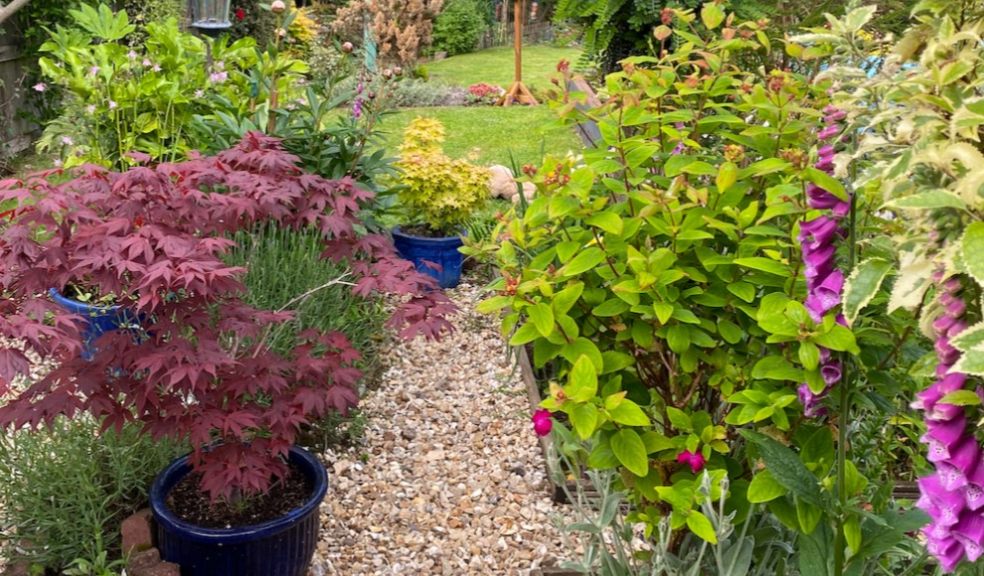
How to create a stunning border in your garden
Borders are an important part of garden design. The best garden borders provide a great boundary for an area of the garden, but also have visual appeal to lead people into the next section. Designers achieve this with careful planting decisions that work with colour, height, and texture so that the border becomes a beautiful and functional feature.
It takes some thought and creativity. But, anyone can buy plants and build a great border in their garden with the right direction.
1. Consider the shape of the border and its placement in the garden
While some gardeners will take their time to build a neat and straight border in their gardens, this isn't always the best approach. These borders can look out of place and too artificial unless you are deliberately going for a structured and manicured look. Instead, it helps to create a more natural raised border that follows the layout of the garden. A curving border is also much better for leading visitors into a different area of the garden.
2. Use textures as points of interest along the border
Texture is a brilliant tool to make use of when creating a dramatic border with various points of interest. You can do more to entice visitors to follow your curved border when there are unusual plants and examples of striking foliage among the flowering plants. Spiky grasses like cordylines work well against softer flowers. Or, you might want to use softer grasses near fragrant flowers for a greater sensory impact. Japanese gardens offer great inspiration for shapes and textures with moss balls and cloud pruning.
3. Use plants of different heights to create more drama and visual impact
It also helps to use plants of varying heights. This is a great way to bring more plant life into a wide border and provide more diversity. Tall, dramatic plants, such as those with impressive flower spikes, can go towards the back. You could then install a trellis which runs up your wall or fence, as this will encourage taller plans to grow up it. Those of a medium height with big open flowers, like cosmos and rudbeckia, can create a vibrant bed of colour in the middle. Then you can bring in some shorter bedding plants at the front. Those structural texture grasses and other plants can come in where they will offer the most impact.
4. Play with colours and patterns
Some garden designers will talk about the right and wrong way to put colours together in a border. But, there isn't really a wrong way if you like a certain colour scheme. Just ask yourself if you want something pretty, dramatic, soothing, or exciting. You can then tie colours into those descriptions and emotions. Don't be afraid to work with similar tones or ones that are complete contrasts. You could go for all red or blue tones, something purely black and white, or create a rainbow. Or, you could go "random" for a meadow effect.
If you’re buying your plants online, you may find that many online stores have a category for plant borders. This can be seen at plants2gardens.com for instance, whose “beds and borders” section includes a range of plants that they believe would grow will in either the border of your garden or in plant beds. This will help you to choose exactly the right style of plant.
5. Be careful with how you arrange your plants before you plant them.
When you have come up with a design and found the ideal plants for your scheme, there is a temptation to start planting straight away. However, it is best to take your time perfecting the scheme before you get your hands dirty. Take your time arranging your plants along the border while they are still in their pots. You can make sure that the ones that will eventually grow the tallest stay near the back. Fundamentally, this approach lets you tweak things here and there before you commit and can’t reverse it (well, you could but it will take a lot of time!). You may realise that the tone of a grass looks better against a different flower than the one originally planned. Move them around until you are satisfied and take a photo as a reference.
Creating a new border from scratch can be a daunting task with a lot of exciting purchases to be made. Once you have a rough idea of the type of plants that you’d like to include in your border, you can then start shopping. Some people prefer to browse in person at garden centers, but there are also a large array of online plant stores where you can pick everything out and have it delivered straight to your door.
Above all, remember that there is no bad choice as long as the plants can thrive in the conditions of your border and will bring plenty of joy for years to come.













